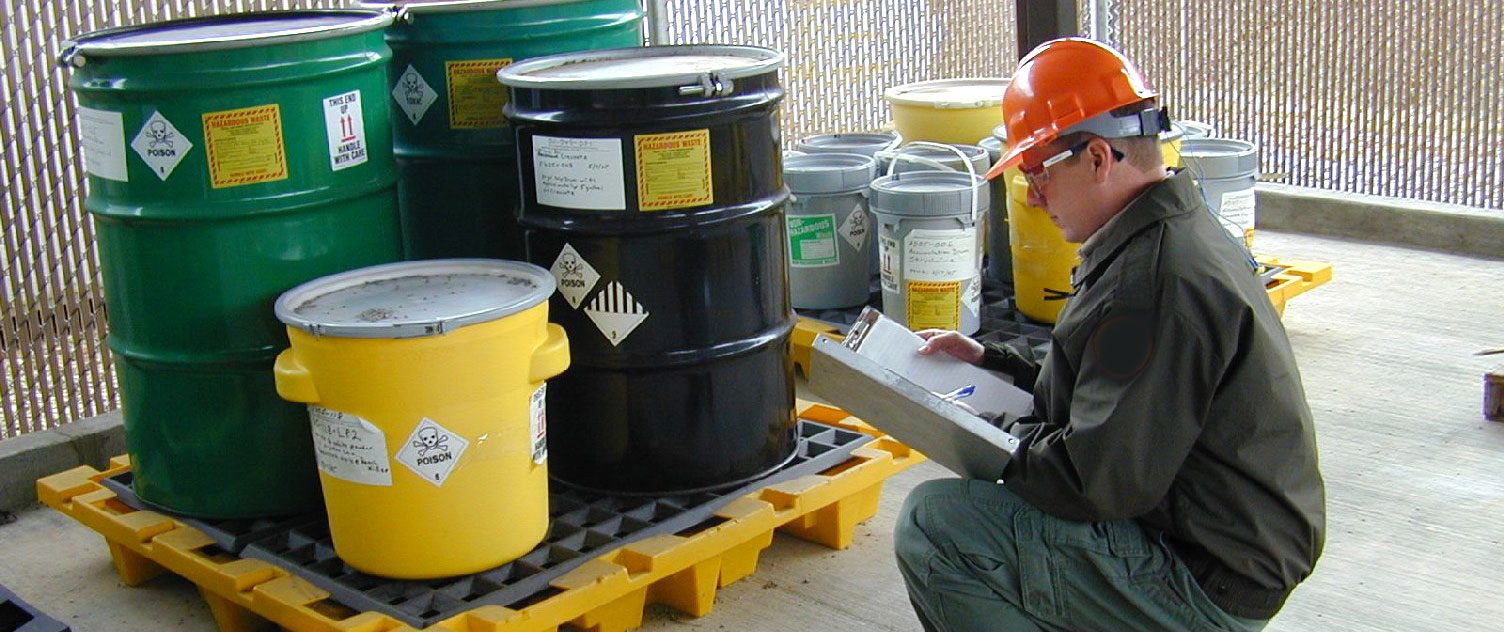
Normally, we’d consider a container one or the other: full or empty. However, if a container has been used to store hazardous waste products, the definition of “empty” changes drastically. Hazardous waste containers that are considered RCRA-empty are not subject to EPA regulations, so understanding the difference is essential to proper waste removal. So how does emptiness in a RCRA container differ? Let’s break it down.
Definition of RCRA
The Resource Conservation and Recovery Act (RCRA), enacted by Congress on behalf of the Environmental Protection Agency, is a federal law established in 1976. This act dictates the appropriate management and disposal of hazardous and non-hazardous solid waste. Failure to comply with the regulations of RCRA can lead to criminal punishment, such as huge fines and even jail time, so it’s crucial to make sure you’re disposing of hazardous waste properly.
What is a RCRA Container?
Simply put, it’s a container that stores hazardous waste materials. Containers are a commonly used method of storage for hazardous waste because they are typically cheaper and easier to manage than their counterparts, such as tanks.
Before hazardous waste was federally regulated with the implementation of RCRA, containers of hazardous waste would typically be inappropriately discarded or even abandoned, causing severe danger to the surrounding environment and overall human health. Now, to fall within regulations put forth by the RCRA, the container must be considered RCRA-empty to meet disposal requirements.
When is a Container Empty?
By EPA definition, an empty chemical container has been removed of all materials or liquids via pumping, pouring, or aspirating – down to every last drop, with no residual material able to be scraped or cleaned away. Containers that meet the empty standard are exempt from needing specialized management as a hazardous waste.
Before a container can be deemed RCRA-empty, a determination needs to be made as to whether the residue removed from the empty container is hazardous, with appropriate follow-up steps. The conditions differ based on whether the container is holding hazardous waste, acute hazardous waste, and hazardous waste in compressed gas form.
Non-Acute Hazardous Waste
RCRA regulations state that a container or inner liner removed from a container that held non-acute hazardous waste is qualified as RCRA-empty if:
- All wastes have been removed using commonly employed practices and no more than 1 inch of residue remains; or
- No more than 3% the weight of total capacity of the container remains (when container size is 110 gallons or less); or
- No more than 0.3% by weight of total capacity of the container remains (when container size is 110 gallons or more)
Acute Hazardous Waste
According to RCRA, a container or inner liner removed from a container that held acute hazardous waste qualifies as RCRA-empty if:
- Container is triple rinsed with material capable of removing acute waste or cleaned by another method that has been scientifically proven to achieve equivalent waste removal; or
- Inner liner that prevented contact between the container and waste is removed
Compressed Gases
Any container holding hazardous waste in compressed gas form qualifies as empty when the pressure within the container approaches atmospheric pressure.
If a container is NOT found to be RCRA-empty, any residues removed from the container must be managed as hazardous waste. This must be in compliance with all federal hazardous waste storage and disposal regulations.
Contact the Hazardous Waste Removal Experts
MLI Environmental has been in the hazardous waste disposal business for over 22 years, offering disposal services and on-site waste training to companies. Don’t risk penalties from the EPA – let our team of experts guide you in proper waste management.
To learn more about hazardous waste disposal, including the differences between types of RCRA containers, please contact us today.

